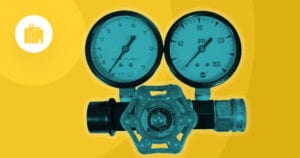
Many would consider music to be a very important part of their everyday lives. It surrounds us as we live, work, and play, which got us thinking about how the Internet of Things (IoT) is having an impact on the music industry!
In this article, we’re going to explore IoT applications in a live concert setting.
Live Concerts
What would you consider a perfect concert experience? Would you be happy if after getting dropped off at the venue, you breezed right through the security line in no more than five minutes? What if you could easily find your friends in the crowd just by looking at your cell phone? And imagine wearing a connected, IoT bracelet that pulsed in time with the music being played on stage?
All these things can be made possible with the integration of IoT in a live music setting. IoT can act as a mechanism to improve concertgoers’ experiences, artist and fan relationships, and logistics for arenas and other venues on the day of the concert.
With the current state of technology, wearable devices are unlocking many of these Applications. The three examples we’ll examine below rely on concertgoers wearing a connected IoT bracelet to a venue. Through this lens, we want to show how exciting it will be to see how the music industry develops with IoT.
Breezing Through the Entrance
Four years ago, Eventbrite acquired Scintilla Technologies, an RFID chipmaker, with ambitions to cut down wait times for concert attendees.
When this technology becomes mainstream for all types of events, the stress of long lines will disappear at concerts, sporting events, and the like. Concert attendees can simply slip on their “wearable ticket,” walk through the security line and enter the concert by passing an RFID antenna that receives ticket information from the wearable device.
Find your Friends in the Sea of General Admission
As Bluetooth technology continues to improve, and as the ability to track assets indoors with high accuracy becomes a reality, finding your friends in a packed concert may become a much easier task. Gone are the days of yelling into the phone over loud music or trying to find your friend group based on directions from a text message.
To unlock this Applications, wearable Bluetooth devices would be worn by concertgoers. These could potentially, of course, double as the “wearable ticket” we just mentioned. Attendees wearing these bracelets could be “tracked” via a pre-installed indoor positioning system, and anyone who has permission to view their friend’s location can do so via an application on their mobile device.
Wearable Devices for Concerts
Lastly, it’s important to discuss how IoT can improve the experience of the concert itself. On her 2015 tour for her 1989 album, Taylor Swift pushed the music industry in this direction. Swift fans were given LED bracelets that used infrared technology to sync with the music, lighting, and movements of those in the audience. The bracelets lit up in sync with the music and with the cadence of the concertgoers’ movements, making for a fan-produced light show enabled by IoT.
IoT will continue to make its way into the music industry, and it will be amazing to see what comes next.





 Related Podcast Episode
Related Podcast Episode




 Related Applications
Related Applications


 Latest IoT News
Latest IoT News









